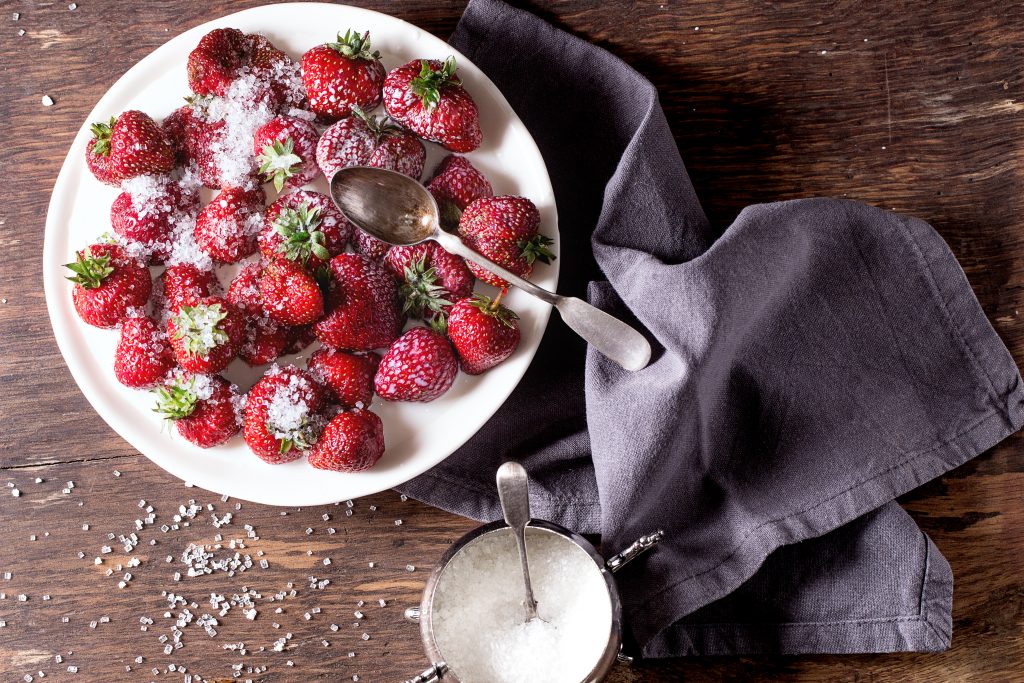Sugar by Any Other Name
BLOG
Sugar by Any Other Name

You know by now that sugar is something you can always do with less of. So you’re checking the ingredient labels on your favorite packaged foods. That’s smart. But beware; ingredient lists can be far from forthcoming with the actual ingredient.
Just because SUGAR isn’t at the top of the list—and it likely won’t be—doesn’t mean whatever food or beverage you’re perusing isn’t packed with it.
Sugar’s Many Shapes
Sugar comes in many different forms, and in many different levels of unhealthy. You may be surprised to find huge amounts of it in foods specifically labeled as “healthy” or “low fat” or “sugar free” like yogurt or energy bars.
You will find forms of sugar listed by up to 61 different names on various packages and labels. YES 61!
Sometimes, it will be listed by three of its names as the fifth, sixth and seventh ingredients. Don’t let this throw you off. Combined, those slightly different forms of sugar may outweigh all of the ingredients listed before it.
Depending on your country, most manufacturers may not be required to specify how much of the sugar contained in a given item is naturally-occurring (such as in fruit) and how much is added. The less added sugar you are consuming, the better a product is for your body.
By being aware of sugar’s most common forms and names, you will be much better armed at working out the good from the bad.
Following are some of sugar’s aliases, complete with distinguishing characteristics.
- Sugar, Sucrose, Cane Sugar, Cane Juice Crystals, Beet Sugar
This is basically plain white sugar, also called table sugar. White sugar is a product of sugar cane or sugar beets. In its original, or “raw,” state, it is less toxic and better able to be used by your body. But most white sugar has been genetically modified, and is linked to a wide range of auto immune diseases and health conditions.
- High-fructose Corn Syrup, Corn Sugar, Corn Sweetener, Glucose-fructose
These pseudonyms of sugar are even worse for you. To produce high-fructose corn syrup, the sugar molecule found in corn is broken down into its separate parts, glucose and fructose.
Absorbing fructose like this causes obesity, blood sugar problems, and promotes diabetes, cancer and heart disease to name only a few.
- Brown Sugar, Confectioners’ Sugar, Glucose Solids
These are also all forms of processed sugar. Brown sugar also contains molasses. Confectioners’ Sugar contains corn starch.
- Agave Nectar, Xylitol
Although these are often marketed as healthy alternatives to regular sugar, there is some controversy about these two. Agave nectar, like corn syrup, is almost entirely made of fructose which has shown itself to be the most dangerous part of sugar.
Xylitol is a naturally-occurring sugar alcohol, often promoted as a sweet sugar-substitute. However, it is difficult for your body to digest, causing unpleasant problems like gas, and it’s often highly processed, making it unnatural and toxic long term.
Sugar’s Many Substitutes
Processed sugar, in all of its forms, provides absolutely nothing good for you, and can even be detrimental to your health. It is basically empty calories with a whole range of unwanted side effects.
The following natural sweeteners on the other hand, will satisfy your sweet tooth and your body’s needs. It’s important to remember though, that sugar should only be consumed in moderation. Your body only needs and responds to very small amounts of even the most natural of sugars.
- Honey
Honey is not only satisfyingly sweet and completely natural (especially if it’s labeled “raw”), it’s even good for you in small amounts. It contains amino acids, electrolytes, antioxidants and antimicrobial compounds.
1 to 2 tablespoons of honey per day is a good amount. It works well for sweeting tea and oatmeal as well as baked goods, although it may take some trial and error to get amounts right.
- Maple Syrup
Maple syrup also works well for general sweetening, baking, making granola bars, etc. It does have a strong, though pleasant, flavor, which may limit what you choose to use it in.
- Stevia
Stevia is a sweetener extracted from the leaves of a flowering plant, meaning it is not “sugar” at all and contains no calories. Because of this fact, it is an especially good choice for people struggling with blood sugar or weight issues.
The original stevia extract was somewhat disliked because a bitter, licorice-like after-taste, but that has been dealt with in later brands like SweetLeaf and Truvia.
Remember that with Stevia, a little goes a long way.
- Coconut Sugar or Coconut Palm Sugar
Coconut sugar is an easy substitute for sugar, as you can use it cup for cup; that is a cup of regular sugar can be replaced with a cup of coconut sugar but I usually use only half of the required amount in a recipe.
Its low glycemic level means it is not nearly as likely as white sugar to cause sugar highs and lows, and coconut sugar is packed with healthy minerals.
- Dried Fruit, Fruit Jams, Pineapple Juice and Banana Puree
Dried fruits like dates, raisins and cranberries are great sweetener choices for protein bars, pies and desserts. Not only are they completely natural and tasty, they provide important dietary elements like fiber, vitamins and minerals.
Real fruit jams, with no added sugar, will add flavor as well as sweetness to any spread. Pineapple juice is often used as an additional sweetener in all-fruit jams, and can also be used on its own with practice.
Bananas are a naturally sweet fruit, and one may be all you need to sweeten up a fruit smoothie.
Processed sugar and manufacturers who fill their goods with it, can be tricky.
Just remember to give ingredient labels a double check, and don’t let sugar sneak into your diet under unsuspectingly.

